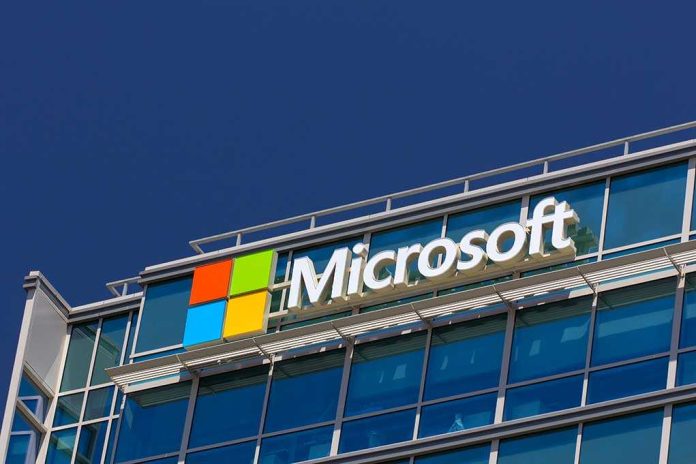
Millions of people are gambling with all their digital memories and business files as Windows 10’s support expires, but most won’t realize it until a ransomware attack or data breach knocks on their door.
Story Snapshot
- Windows 10 support ended October 14, 2025, exposing hundreds of millions of users to new security threats.
- Microsoft offers paid Extended Security Updates, but most home and small business users will not opt in.
- Hardware upgrade barriers mean many cannot move to Windows 11, leaving functional PCs stranded and vulnerable.
- Cybercriminals are expected to target unpatched systems, raising the odds of catastrophic data loss.
Microsoft’s Decision and Market Fallout
Microsoft officially retired Windows 10 Home and Pro editions on October 14, 2025, capping a decade-long run that saw the operating system installed on more than a billion devices. The final version, 22H2, is now frozen in time, with no further security updates coming for most users. Only those who pay for Extended Security Updates (ESU) will receive ongoing protection, representing a fraction of the total user base. This move is consistent with Microsoft’s historical support timelines, but the size of the affected population this time is unprecedented. The company’s shift to Windows 11, with strict hardware requirements, means millions are left behind—creating a massive, vulnerable digital footprint for cybercriminals to exploit.
This transition is not just a software update; it’s a market shockwave. Hardware manufacturers stand to profit from a sudden surge in demand as users scramble to replace incompatible PCs. For many small businesses and educational institutions, the cost of upgrading is daunting, especially when perfectly serviceable computers are rendered obsolete by artificial technical barriers. Environmental concerns mount as electronic waste piles up, fueled by the forced obsolescence rather than genuine hardware failure. Microsoft’s move is drawing criticism from analysts who argue that security enhancements in Windows 11, such as TPM 2.0, could have been made optional, preserving more legacy devices and reducing waste.
Security Risks: The New Digital Wild West
The most immediate and severe consequence of Windows 10’s end of support is the exposure to unpatched vulnerabilities. Every new security flaw discovered after October 14, 2025, becomes an open invitation for hackers. Ransomware gangs, malware authors, and data thieves now have a roadmap to millions of unprotected systems, many of which store irreplaceable personal memories, financial documents, and sensitive business data. Security experts universally warn that running an unsupported operating system is an unacceptable risk for anyone handling confidential information. The parallels to Windows 7’s end of support are clear: delayed upgrades led to a spike in successful attacks, with some organizations suffering catastrophic data loss that could have been avoided.
Microsoft will stop security updates on Oct. 14, leaving millions vulnerable. https://t.co/wV1Xrxt7f2
— 10/11 News (@1011_News) October 10, 2025
Zero-day vulnerabilities, once patched monthly by Microsoft, now linger indefinitely on Windows 10. Attackers can exploit these holes with impunity, knowing that no fix is forthcoming for standard users. The risk is not hypothetical—history shows that unsupported systems become prime targets. For home users, the threat is personal: ransomware could lock away family photos and financial records forever. For businesses, the cost of a breach can mean bankruptcy. The gamble is real, and the odds are getting worse by the day.
The Human Toll: Facing Hard Choices and Uncertain Futures
Millions of consumers, small businesses, and schools now face tough decisions. Upgrading to Windows 11 requires hardware that many do not possess, and buying new computers is a costly proposition. The paid ESU program offers a lifeline, but at a price point few home users will accept. Many will simply keep using Windows 10, often unaware of the risks, until disaster strikes. Technology adoption researchers predict a fragmented response, with some organizations scrambling to upgrade, while large swaths of individual users continue with unsupported systems for months or even years. This ensures a long tail of vulnerable machines, ripe for exploitation and data loss.
Legacy software compatibility adds another wrinkle. Some critical business applications are tied to Windows 10, forcing companies to run unsupported environments or invest in expensive software migrations. The operational disruptions are already causing headaches for IT teams, as compressed timelines and training needs stall productivity. The broader technology landscape is shifting, with some users exploring alternatives like Linux or Chrome OS to escape the forced upgrade treadmill. As Microsoft tightens its grip on platform control, critics lament the reversal of Windows 10’s original “Windows as a Service” promise—a shift that caught many by surprise and upended long-term planning.
Sources:
Microsoft Lifecycle: Windows 10 Home and Pro
Microsoft Support: Windows 10 Support Ends
Microsoft: Extended Security Updates
Microsoft Answers: Windows 10 Support Ends



